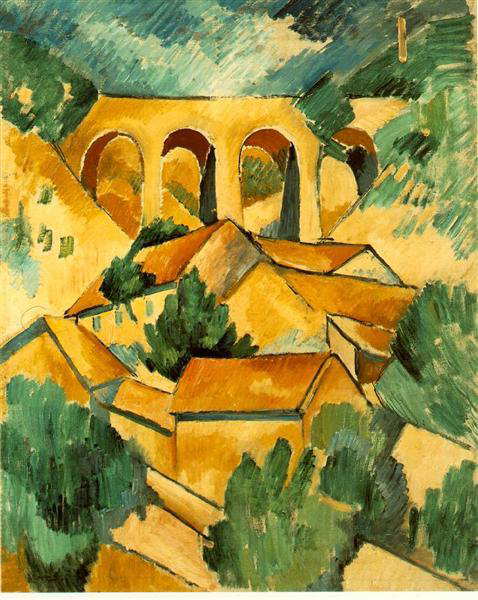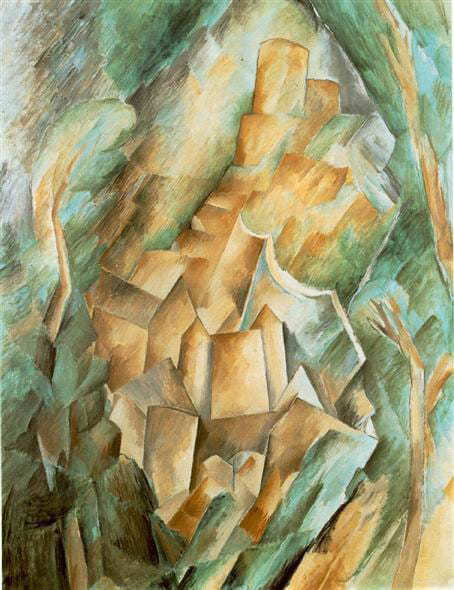
Cubism as an art movement emerged in Paris between 1907 and 1908. It is a collaborative creation by artists like Pablo Picasso and Georges Braque and is classified by its avant-garde appearance. Cubism became one of the most influential art styles of the 20th century. Here, we’re exploring everything you need to know about Cubism for everyone, from art fanatics to casual gallery-goers. Read on.
Influences Leading to Cubism

Paul Cezanne, the Post-Impressionist French painter, is the foremost precursor to Cubism in many respects. In 1906, he explained that every visual object could be traceable to geometrical forms.Since the main idea of Cubism is to decompose realistic subjects into geometric shapes to help give them perspective and distinct impressions, this statement is seen as a major precursor to Cubism.

The ongoing industrialization at the beginning of the 20th century was another main factor that led to the Cubist art movement. Pablo Picasso understood very early that painting must be re-invented if it wanted to survive among photography and videography of the future. Low and behold, Cubism was formed.
The Beginnings of Cubism

Get the latest articles delivered to your inbox
Sign up to our Free Weekly NewsletterAs a progressive reaction to Henri Matisse’s painting Le bonheur de vivre, Pablo Picasso painted Les Demoiselles d’Avignon (The Young Ladies of Avignon) in 1907.
His painting is considered proto-cubist and represents one of the first works of the Cubist movement. The large oil painting portrays five nude prostitutes, equipped with masculine features and elements of African masks, while the female bodies are based on geometrical forms.
Les Demoiselles d’Avignon is one of the most important works of Picasso’s African period and illustrates elements of Cubism: light colors, a break from classical Chiascuro, as well as different perspectives of the same subject, all in one painting.

In the same year, Pablo Picasso met the French painter and sculptor George Braque. Braque, at this point, had already been part of the Fauvist movement with his polychromatic paintings of stylized landscapes and seascapes. Cubism can be first seen in Braque’s painting Viaduct at L’Estaque from 1908.
Art critic Louis Vauxcelles coined the word ‘Cubism’. He called works of Braque “bizarries cubiques” or cubic oddities. Besides Braque and Picasso, Juan Gris was also an important representative of Cubism, as well as Fernand Léger, Marcel Duchamp, and Robert Delaunay who were at the forefront of Orphism (an offshoot of Cubism).

However, while Gris was a theorist who always wanted to develop a rational system for Cubism, Picasso always rejected a theoretical approach to Cubism. Regardless, they’re all part of the movement and brought a personal touch to Cubism and its history.
Cubism helps achieve multiple perspectives

With realism, artists would paint scenes as they actually looked, with only one perspective and from one viewpoint. Cubism abandoned that traditional technique for flattened, geometric subjects and objects.
Placing elements in a multi-dimensional form would capture multiple perspectives from different angles. The aim was to present the inner life of subjects and objects versus representing things as our eyes see them.
Aesthetical Cubism vs. Synthetic Cubism
In the early years of Cubism, Picasso, and Braque developed an aesthetical form of Cubism. In 1912, however, the art movement and way of painting changed, giving birth to Synthetic Cubism. Today, Aesthetical and Synthetic Cubism are seen as the two main subsets of Cubism.
Aesthetical Cubism

The first official phase of Cubism lasted from 1908 to 1912 and is mainly characterized by the use of light colors and by displaying a subject from multiple perspectives. In this phase, a new understanding of painting light was born and the classical separation of painting a foreground, middle ground, and background were left behind.

This concept called “simultaneousness” became one of the most important elements of art from this period which became known as Aesthetical Cubism. It was also the beginning of Juan Gris’ career as a famous Cubist.
Synthetic Cubism

Between 1912 to 1914, Aesthetical Cubism changed into Synthetic Cubism. During this period, Picasso, Braque, and Gris used bright colors in their paintings more and more while simplifying their compositions.

Also, for the first time, parts of magazines and newspapers were integrated into paintings. In short, collage art was born as a part of Synthetic Cubism. Braque’s work Fruit Dish and Glass is possibly the first paper collé. From then on, paper, parts of a newspaper, wallpapers, imitation wood grain, sawdust, sand, and other materials appeared in their paintings more frequently.
The End of Cubism and Its Lasting Influence

Cubism as an art movement came to an end with the beginning of the First World War. Military service brought Picasso, Braque, and Gris apart, and their joint work as Cubists faded away.
Cubism, however, remained in existence as a strong reference for a lot of other art movements and continues to do so today. Futurists, for example, were inspired by Cubist compositions, Surrealists took over collage art, and Dada, De Stijl, Bauhaus, and Abstract Expressionist movements were highly inspired by Cubism.
Thanks to Cubism, the foundation for various abstract styles, including Constructivism, Futurism, and Neo-Plasticism, have been set. As such a distinct style in the world of art and painting, it truly stands the test of time and remains an important era in art history.
What is your favorite piece of Cubist art? Who is your favorite Cubism artist? The next time you peruse your local art gallery and see something inspired by Cubism, you’ll be able to impress your friends with all your newfound fancy knowledge on the subject. And for that, you’re welcome.








